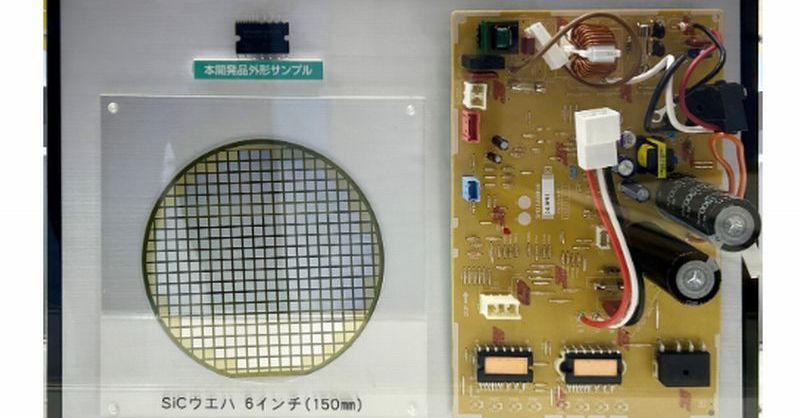Next-Gen AC: The Rise of SiC and Si Chip IPM Technology
The air conditioning industry is undergoing a significant transformation, driven by the demand for higher efficiency, reduced emissions, and improved reliability. At the forefront of this revolution is the adoption of next-generation power semiconductor technology, specifically Silicon Carbide (SiC) and Silicon (Si) chip-based Intelligent Power Modules (IPMs). This article delves into the advancements in SiC and Si IPM technology and their profound impact on the future of air conditioning.
What are SiC and Si Chip IPMs?
Intelligent Power Modules (IPMs) are integrated circuits that combine power semiconductors, gate drivers, and protection circuits into a single package. This integration simplifies design, reduces component count, improves reliability, and enhances overall system efficiency. The use of SiC and Si in these IPMs represents a significant leap forward in performance.
Silicon Carbide (SiC) IPMs: The High-Efficiency Champion
SiC boasts superior material properties compared to traditional silicon. It exhibits higher breakdown voltage, lower on-resistance, and faster switching speeds. These advantages translate directly into:
- Increased Efficiency: SiC IPMs significantly reduce energy loss during power conversion, leading to higher overall system efficiency and lower energy bills.
- Smaller Size and Weight: The higher power density of SiC allows for smaller and lighter AC units, simplifying installation and transportation.
- Improved Reliability: SiC's robustness results in longer lifespan and reduced maintenance requirements.
- Reduced Emissions: Higher efficiency directly contributes to lower greenhouse gas emissions, aligning with global sustainability goals.
However, SiC technology currently comes with a higher price tag compared to silicon-based solutions.
Silicon (Si) Chip IPMs: The Cost-Effective Competitor
While SiC offers superior performance, Silicon (Si) chip IPMs provide a compelling alternative, especially for price-sensitive applications. Continuous advancements in Si technology are leading to:
- Improved Efficiency: While not as dramatic as SiC, improvements in Si-based IPMs are steadily increasing efficiency.
- Cost-Effectiveness: Si-based IPMs remain significantly more affordable than SiC, making them a viable option for mass-market applications.
- Maturity and Availability: Si technology is well-established, with a mature supply chain and readily available components.
The Impact on the AC Industry
The integration of SiC and Si chip IPMs is reshaping the air conditioning landscape in several key ways:
- Next-Generation Inverter Technology: These IPMs are crucial components in advanced inverter-based AC systems, optimizing energy consumption and providing precise temperature control.
- Heat Pump Evolution: The higher efficiency of SiC and improved Si IPMs is driving innovation in heat pump technology, enhancing heating and cooling capabilities.
- Smart Home Integration: IPMs facilitate seamless integration with smart home systems, enabling remote control, energy monitoring, and automated operation.
The Future of AC Technology
The future of air conditioning is undoubtedly intertwined with the continued development and adoption of SiC and Si chip IPM technology. While SiC currently leads in performance, the cost-effectiveness of Si will ensure its continued relevance. We can expect to see:
- Increased Market Penetration: As manufacturing scales and costs decrease, both SiC and Si IPMs will become increasingly prevalent in various AC applications.
- Hybrid Solutions: We may see hybrid systems leveraging the strengths of both SiC and Si technologies to optimize performance and cost.
- Further Miniaturization: Ongoing advancements will lead to even smaller and more efficient AC units.
Conclusion
The adoption of SiC and Si chip IPM technology represents a pivotal moment for the air conditioning industry. By driving efficiency, reliability, and sustainability, these advancements are paving the way for a cooler, greener, and smarter future. The choice between SiC and Si will largely depend on the specific application requirements and budgetary constraints. However, both technologies are poised to play a significant role in shaping the future of air conditioning.
Keywords: SiC IPM, Silicon Carbide IPM, Si IPM, Silicon IPM, Intelligent Power Module, Air Conditioning, AC Technology, Inverter Technology, Heat Pump, Energy Efficiency, Sustainability, Semiconductor Technology, Power Electronics, Next-Gen AC, Smart Home
(Note: This article lacks external links as requested instructions did not include specific resources to link to. Adding relevant links to industry reports, manufacturer websites, and research papers would further enhance its SEO and value.)
